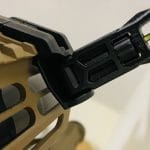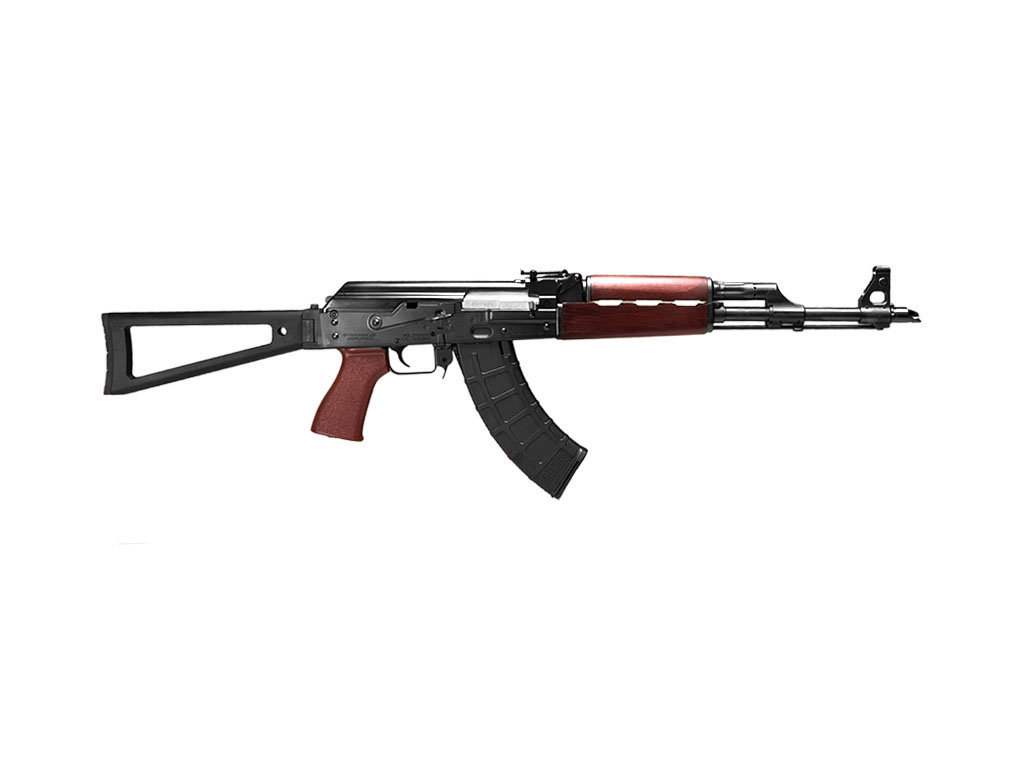

Categories:
Calling the AR vs AK conversation the “Pepsi vs Coke” of the rifle world is fair — both sides are passionate, both options are proven, and neither is objectively “wrong.” Each platform was built around different priorities and design philosophies: the AR family emphasizes precision, modularity, and ergonomics, while the AK family prioritizes simplicity, ruggedness, and reliability in adverse conditions. Understanding the engineering choices, real-world tradeoffs, and best use cases will help you pick the platform that actually fits your needs.
The AR family (starting with the AR-15 lineage) was designed around lightweight materials, high mechanical accuracy, and an emphasis on a low-recoil, flat-shooting cartridge in a modern gas-operated, direct-gas or piston-tuned system. From the start the platform prioritized ergonomics and the ability to rapidly adapt to changing mission requirements via accessories and optics. The modern AR ecosystem is defined by standardization — upper/lower receivers, rail systems, buffer systems, and a huge aftermarket.
The AK family (beginning with the AK-47 and its derivatives) was designed for wartime durability and user simplicity. It favors stamped or forged steel construction, looser tolerances, and a gas-piston operation that tolerates fouling, poor maintenance, and adverse climates. The design goal was “works when dirty” — ease of use by conscripts, minimal maintenance, and functionality across a wide variety of ammunition and environmental conditions.
| Feature | AR Platform | AK Platform |
|---|---|---|
| Operating system | Direct impingement or short-stroke gas piston (varies by build) | Long-stroke gas piston |
| Barrel/receiver fit | Tighter tolerances for higher inherent accuracy | Looser tolerances to allow dirt and debris tolerance |
| Materials | Aluminum receivers, polymer stocks, modern alloys | Steel receivers (stamped/forged), wood or polymer furniture |
| Magazine design | Box magazines, generally easier to load and lighter | Curved steel/ribbed polymer mags; robust but sometimes heavier |
In practice those mechanical differences create different real-world outcomes: the AR’s tight fit and gas-impingement (in many designs) favor repeatable accuracy; the AK’s long piston and looser fit favor rock-solid reliability under abuse.
Because AR platforms are typically manufactured with finer tolerances, free-floating handguards, and more consistent barrel bedding, they have a natural accuracy advantage — especially at intermediate ranges. Optics mounting (Picatinny/MLok/KeyMod), trigger options, and adjustable gas systems further enhance repeatable shot placement.
AK platforms can be very accurate in the right build (match barrels, improved triggers), but stock AKs usually trail ARs in raw group size and point-of-aim consistency. For most users, the AR will deliver tighter groups with less tuning.
Here’s where the AK legend is earned. Designed for conscript armies and harsh battlefields, AK patterns tolerate:
Long-stroke piston operation and loose tolerances mean an AK will often keep running when an AR would need cleaning or careful tuning. Modern piston ARs close the gap significantly, but the AK’s simplicity still provides a reliability edge in the most brutal environments.
If you want to trick out a rifle — optics, triggers, rails, barrels, suppressors, spare parts — the AR market is unrivaled. The standardized interface (mil-spec upper/lower split) lets you swap complete uppers, change calibers through simple conversions, and tailor the rifle to highly specific roles overnight.
The AK aftermarket has matured a lot: modern polymer stocks, optics mounts, improved triggers, rails, and match barrels are widely available. That said, the level of modularity isn’t as seamless as the AR ecosystem because of varying receiver and trunnion dimensions among manufacturers and the platform’s stamped/forged heritage.
Both platforms support multiple calibers, but the AR’s modular nature makes caliber swaps (5.56 to .300 Blackout to 6.5 Grendel to .308 in separate AR10 uppers) comparatively straightforward. The AK family supports rifles in 7.62×39, 5.45×39, 5.56, and larger calibers, but conversions are more platform-specific and less plug-and-play.
Bottom line: if you’ll be in a long deployment in dusty, humid, or oily environments with limited cleaning opportunities, the AK is the safer pick. If you have access to regular maintenance and want higher precision, the AR is likely better.
AR platforms are often lighter because of aluminum receivers and polymer components. Lighter typically means easier to carry for long periods and quicker to maneuver. AKs tend to be heavier, especially older stamped/steel designs, which helps soak up recoil but can fatigue a carrier over long treks.
| Category | AR Platform | AK Platform |
|---|---|---|
| Accuracy | Higher (stock-to-stock) | Good with upgrades |
| Reliability in Mucky Conditions | Good (piston variants better) | Excellent |
| Customization | Exceptional | Growing but more limited |
| Weight | Generally lighter | Generally heavier |
| Maintenance Frequency | Higher (DI systems) | Lower |
| Cost of Entry | Wide range | Wide range (often cheaper entry) |
It comes down to mission and priorities. If your focus is competition, precision, modularity, or training volume, the AR platform is often the better fit. If your priority is a simple, dependable workhorse for rough conditions where maintenance access is limited, the AK is an excellent choice.
For many serious users, the right answer is “both”: keep an AR for precision and daily tasks, and an AK for rugged backup or environments that chew up equipment. Either way, training, ammunition selection, and proper maintenance will determine real performance far more than brand-loyal talking points.
The AR vs AK debate will never be fully settled because it’s about values as much as engineering. Both platforms have earned global followings for good reason. The smart buyer picks the one aligned with how they actually intend to use the rifle — not the one with the louder fanbase.
Always follow safe handling, all applicable laws, and local regulations. This article is for informational purposes and to help you pick the right platform for your needs.